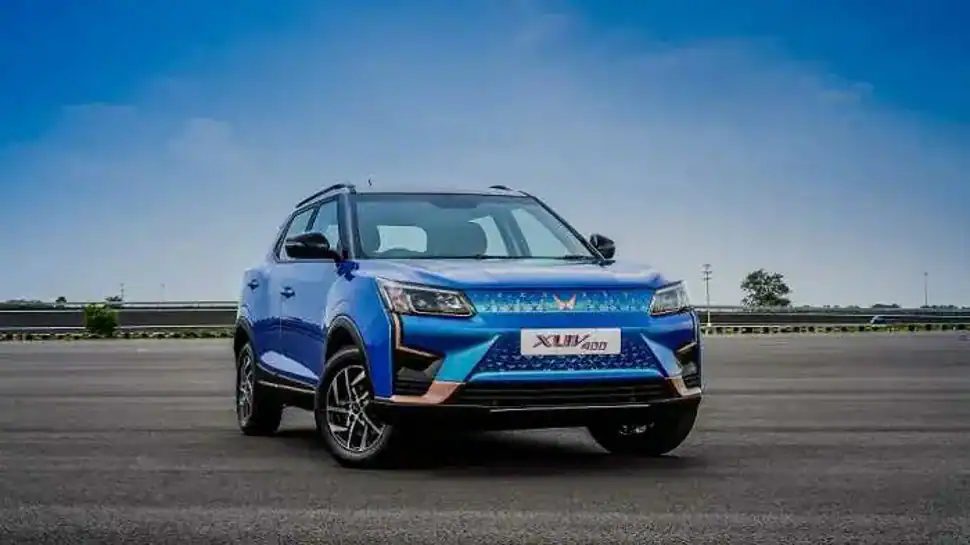As Mahindra & Mahindra is “very positive” about the country’s gradual move to the adoption of electric vehicles over the next few years, it is increasing its production schedule to build new automobiles and investments. According to a top corporate executive, the Mumbai-based automaker expects a gradual transition to electric mobility, with the fleet and sports utility vehicle segments expected to spearhead the change in the domestic market.
“Over the next 2-3 years, we will see this kind of transition happening,” Mahindra & Mahindra Executive Director (Auto and Farm sectors) Rajesh Jejurikar told PTI in an interaction. “Our internal research tells us that 25% of the existing SUV buyers would like to consider an electric SUV as their next purchase.”
Mahindra and Mahindra’s Future Plans
He also said that five years after the percentage of the business’s SUVs that are electric, the company anticipates that 20 to 30 percent of its SUVs will be electric. Mahindra has unveiled five new electric sports utility vehicles (SUVs), placing a significant wager on green mobility. The first four of these SUVs are anticipated to join the market between December 2024 and 2026.
Under the two names, the carmaker intends to release five electric SUV models. XUV and “BE,” a brand-new electric-only label. The new electric vehicle will be released under the “BE” name, while the existing brand will be sold under the “XUV” marque.

Jejurikar elaborated on the tendencies, stating that residences with several cars will be the first to adopt electricity in the domestic market. Additionally, he said, “the fleet market will transition to electric very fast as it makes economic sense for them.”
However, Jejurikar predicted that the growth of electric hatchbacks and sedans in the personal market would be gradual because consumers would be reluctant to pay a greater price up front for the family’s sole vehicle without suitable infrastructure for charging.
It is both a yes and a no, Jejurikar stated. Currently, the C segment has a penetration rate of about 1% while the B segment has a penetration rate of about 4%. No, it won’t happen that this 1 and 4 percent will suddenly increase to 30 and 40 percent.
However, he continued, “We will see a rise towards 10% 15%, so 20-30% penetration in the next 4-5 years is a realistic road map for the areas we operate in.
According to Jejurikar, the business anticipates making a definitive choice about the infrastructure needed to produce its electric sports utility cars in the following three to six months. The business has previously announced the mid-sized XUV400, which will be sold from its Nashik facility in Maharashtra, as its first electric SUV under the XUV brand.
With the goal of finalizing the production plan for the remaining products, it is currently in discussions with the governments of three to four states. In the upcoming three to six months, Jejurikar said that a choice will need to be made.
He was answering a query on when the business can complete the production strategy. He responded that it has not yet been decided whether the corporation will use its current facilities or shift to a new one to roll out its internal combustion engine (ICE) model range. Currently, the automaker uses plants in places like Maharashtra and Tamil Nadu to produce its traditional ICE vehicles.
Regarding investments in the electric sector, Jejurikar claimed that the business has already disclosed that the capital expenditure for electric programs over a three-year period would be between Rs 8,000 and 9,000 crores.
This holiday season and year may end up being the strongest in terms of sales for the company thus far due to the chip position easing and record bookings for items like the Scorpio N and XUV700. When asked if the company’s sales could be at their highest in the current fiscal year, Jejurikar responded, “Hopefully, absolutely.”
Regarding the chip supply crisis, he said: “We were able to overcome many of the challenges we had.” Last month, the business delivered almost 30,000 SUVs to dealers, marking the highest-ever wholesale sale in a single month. Jejurikar commented that the company’s decision to forego hybrid products in favor of pure electric ones was consistent with the government’s road map.
A contribution from PTI




